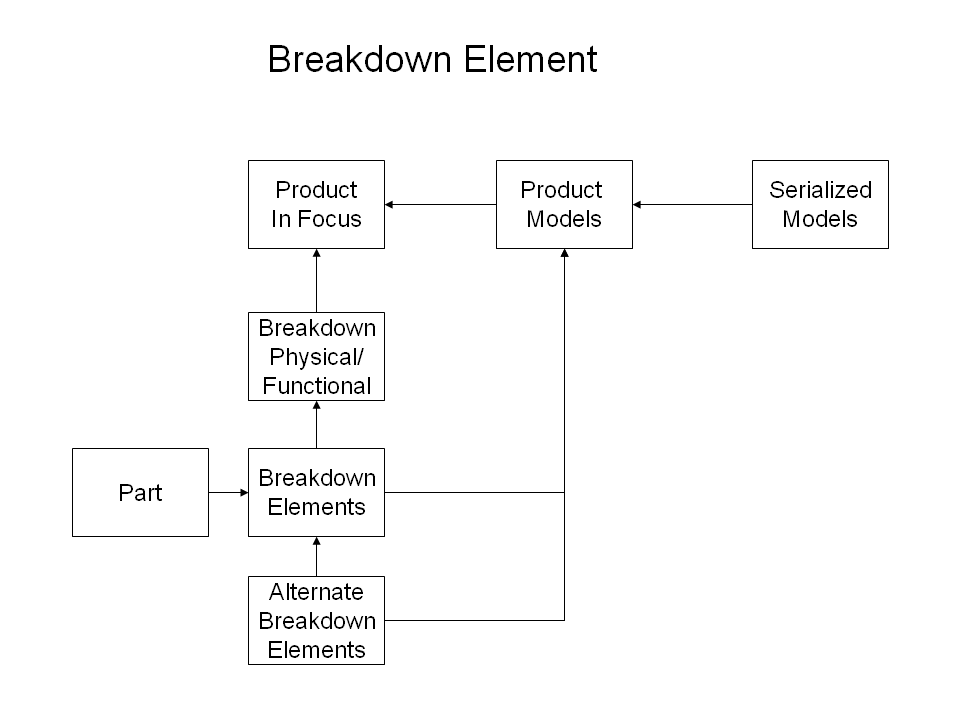
| Business DEX (LOGSA005):— breakdown_element | Date: 2011/11/17 19:29:27 Revision: 1.30 |
The Breakdown Element Data Exchange Set can be used to exchange the product breakdown from a product data model.
Breakdown Element specification information is summarized in Figure 7 below.

The product in scope and its component assemblies and parts. Can be either a part, or an element in a logical breakdown structure of a defined end item. This is normally defined by an End Item Acronym Code.
The product in focus can have different versions of the product, each of which, has a different breakdown. Models are normally identified by a Usable on Code.
The product in focus can have versions that are identified by blocks of serial numbers. Each block of serial numbers represents a different model of the product.
The product in focus and its product model breakdowns can be represented via a physical breakdown (e.g. follows the design drawing structure) or a functional breakdown (e.g. represents functions of the product, propulsion, fuel, communications, etc). Breakdowns may also be hybrid or zonal.
The identifier assigned to each physical or functional element in the breakdown of the product. An Logistics Support Analysis Control Number is normally used for the breakdown element.
Breakdown elements can represent alternate designs for the same physical or functional location in the product, alternate qualified parts for the same breakdown element or alternative breakdown elements for different models of the product. The Alternate Logistics Support Analysis Control Number Code is normally used for the Alternate Breakdown Element.
The realization of a breakdown element normally derived from the engineering design or the product data model.
© OASIS 2010 — All rights reserved